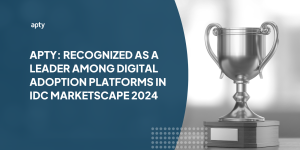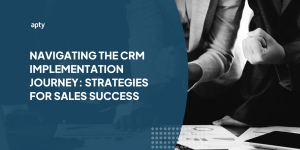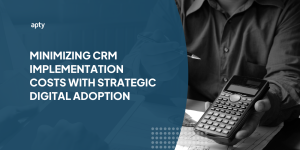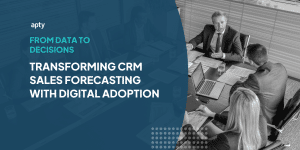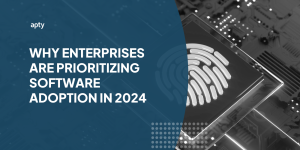Adapting to change is critical for businesses striving to maintain a competitive edge and ensure long-term success. Misconceptions about change management often paint it as cumbersome and rigid; however, when executed well, it streamlines processes, enhances agility, and reduces disruptions. Implementing change management best practices is vital for organizations looking to thrive amidst ongoing changes in technology, market competition, and regulatory environments.
Statistics indicate that about 50% of organizational change initiatives fall short, underscoring the importance of effective change management strategies. This significant failure rate highlights the need for companies to improve their approach to managing change, which is critical for staying relevant in an increasingly competitive market. Failure in change management can lead to stagnation or, worse, organizational decline.
Recognizing change management as a crucial factor for success, businesses must adeptly manage transitions to remain resilient. Change management encompasses the methodologies aimed at preparing, supporting, and helping individuals and groups adopt new changes, driving positive outcomes for the organization.
Given the rapid changes in technology, shifts in consumer behavior, and the introduction of new regulations, the demand for proficient change management practices is evident. More agile competitors might outpace organizations that cannot adapt to new opportunities.
Mastering change management best practices is essential for those tasked with leading significant change initiatives or aiming to take on such responsibilities. It is recommended that you follow these change management best practices to keep up, thrive, and succeed in the long run.
Definition of Change Management
Change management is the deliberate approach to transitioning individuals, teams, and organizations from a current state to a desired future state. It aims to maximize the positive benefits of change while minimizing any negative impacts. The process involves preparing for change, managing the change as it happens, and ensuring that the change is effectively embedded into the organization.
A key aspect of change management is addressing and mitigating resistance to change. Resistance is a natural human reaction to unfamiliar situations or adjustments in the workplace. It can manifest as skepticism, reluctance, or outright opposition, and managing this resistance is crucial for the successful implementation of change.
The essence of change management lies in its ability to streamline the adoption of new processes, technologies, or business strategies, ensuring that they are embraced and utilized effectively across the organization.
Change management facilitates smoother transitions and helps individuals adjust to changes more comfortably by employing a structured methodology that includes communication, training, and support. It encompasses assessing the impacts of change, planning for its implementation, and monitoring the change process to address any issues promptly, including resistance, ensuring the organization’s goals are met efficiently.
Understanding the Different Facets of Change Management
In the heart of navigating the complex maze of change management, two distinct paths emerge: Organizational Change Management and Digital Change Management. Both are critical to the success of any transformation project, yet they dance to very different tunes. Let’s decode these rhythms:
Organizational Change Management
- Focuses on People: The core of organizational change management lies in guiding people through change. It’s all about the human element, ensuring teams understand, accept, and embrace the shifts in their environment.
- Strategic Alignment: It aligns the change with the company’s overall strategy, ensuring that everyone’s rowing in the same direction.
- Culture and Leadership: A significant chunk of the effort goes into shaping the organization’s culture and leadership to support the change, emphasizing communication, training, and support systems.
Digital Change Management
- Technology-Driven: As the name suggests, digital change zeroes in on implementing new technologies and digital tools within an organization.
- Process and Workflow Reengineering: It’s not just about new software or systems but also rethinking how things are done to improve efficiency, agility, and innovation.
- Data and Insights: Digital change leans heavily on data analytics and insights to drive decisions, monitor progress, and measure the impact of change.
Exploring Types of Change Management: From Project to Digital Transformation
Both organizational and digital change management play pivotal roles in the grand scheme of transformation, yet they address different needs and challenges. Integrating these approaches with the Top 6 Change Management Best Practices ensures a holistic strategy that embraces technology and nurtures the human element. Incorporating best practices such as effective communication, stakeholder engagement, and continuous improvement, within the context of these change management types, paves the way for a seamless transition and sustainable success.
Here are a few additional types of change management to consider weaving into your narrative:
Project Change Management
This type focuses on changes within a specific project’s scope, ensuring that any alterations to project plans, schedules, or resources are meticulously managed and communicated. It’s pivotal for keeping projects on track and within budget.
- Scope and Objectives Alignment: Ensures project changes align with project objectives and overall business goals, maintaining strategic coherence.
- Change Control Processes: Implements structured procedures for requesting, reviewing, and approving changes, minimizing disruptions and scope creep.
- Communication and Documentation: Emphasizes the importance of documenting changes and communicating them effectively to all stakeholders to maintain project transparency and accountability.
Enterprise Change Management (ECM)
ECM takes a bird’s-eye view, embedding change management capabilities and practices into the fabric of an organization. It’s about creating a culture ready for change, capable of responding swiftly and effectively to new challenges and opportunities.
- Capability Development: Focuses on building an organization-wide capability and readiness for change, embedding flexibility into the organizational DNA.
- Strategic Integration: Integrates change management practices into all levels of strategic planning and execution, ensuring that change initiatives support overarching business objectives.
- Culture and Leadership Engagement: Cultivates a change-ready culture, led by proactive and supportive leadership, to foster an environment where change is embraced as a constant.
Individual Change Management
At its core, all change happens at an individual level. This type focuses on understanding how people experience change and what they need to successfully change their behavior. It involves personal coaching, training, and support systems.
- Personal Transition: Recognizes and addresses the personal journeys individuals undergo during change, tailoring support to meet their unique needs.
- Resistance Management: Identifies and mitigates resistance at an individual level, leveraging personalized strategies to encourage adoption and engagement.
- Training and Support: Provides targeted training and resources to empower individuals to succeed in the new state, ensuring they have the skills and confidence needed.
Operational Change Management
This variety deals with changes in business operations, including processes, workflows, and procedures. It’s essential for improving efficiency, quality, and productivity in day-to-day operations.
- Process Optimization: Identifies and implements changes to business processes, aiming to enhance efficiency, quality, and adaptability.
- Workflow Reconfiguration: Examines and adjusts workflows to optimize operational performance and responsiveness to changing market or business needs.
- Performance Monitoring: Utilizes metrics and KPIs to track the impact of operational changes, ensuring continuous improvement and alignment with business goals.
The Span of Digital Change Management Across Types
Digital change management indeed intersects with various types of change management, underscoring the pervasive impact of technology across all aspects of an organization. Here’s how digital change management intertwines with the types outlined:
- Project and Operational: Digital tools and systems are often at the heart of project and operational changes, requiring careful integration and adaptation.
- Enterprise and Individual: The digital transformation necessitates a cultural shift at both the organizational and individual levels, promoting digital literacy and agile responses to digital innovations.
- Across All Types: Digital change management strategies are essential for guiding the implementation of new technologies, ensuring they deliver value and are embraced by users across the board.
Key Types of Change Management: Strategies for Organizational Success
- Strategic Change Management:
- Revitalizes a company’s direction through changes in policies, processes, mission, and vision.
- Aims to enhance competitive edge and capitalize on new opportunities, necessitating clear communication of the strategy’s long-term value.
- Structural Change Management:
- Adjusts internal structures, like management hierarchies and job descriptions, often triggered by mergers, market shifts, or regulatory changes.
- Requires enhanced communication and reassurance to help employees navigate changes in their daily work environments.
- Cultural Change Management:
- Strengthens organizational culture to boost employee engagement and productivity.
- Involves promoting new mindsets and behaviors, such as through DEI initiatives, and demands gradual implementation with continuous reinforcement.
- Technological Change Management:
- Keeps pace with technological advancements to prevent falling behind.
- Focuses on demonstrating the benefits of new technologies to employees, supported by adequate training and empathetic leadership during the transition.
These facets underscore the intricate balance required in change management—between advancing strategic goals, reshaping organizational structures, nurturing cultural evolution, and embracing technological innovations. Successful change management practices are not just about the “what” and “how” but also profoundly about the “who” and “why,” emphasizing the psychological and human elements at the core of transformational efforts.
Change Management Best Practices
Navigating the currents of change management, transformational leaders blend the art of human-centric leadership with the science of digital innovation. This “Change Management Best Practices” section unravels the synergy between strategic change management solutions and the transformative power of digital adoption platforms (DAPs). It highlights how DAPs not only streamline technological integration but also champion a culture of adaptability and continuous learning, ensuring organizations thrive in an era of perpetual transformation.
- Explain Your Change Vision
- Stakeholder Engagement and Communication
- Data-Driven Strategy and Planning
- User-Centric Training and Support
- Leadership Alignment and Support
- Continuous Monitoring, Feedback, and Adjustment
1. Explain Your Change Vision
Aligning your change initiative with the company’s vision is a fundamental practice in change management. It enlightens employees on the impact and integrates the change into the organization’s values. This vision should articulate the company’s guiding principles, preparing the ground for a comprehensive change management action plan. This plan should clarify business processes and identify resource gaps.
Incorporating the mission statement while presenting the vision clarifies the organization’s purpose. Maintaining a clear vision is crucial despite the rapid pace of change in today’s world. Changes may evoke a range of responses among employees, from excitement to apprehension. Therefore, providing a supportive framework and appropriate tools is vital for navigating change effectively.
DAP Solution: DAPs facilitate the communication of the change vision by providing interactive and engaging platforms where this vision can be shared vividly across the organization. They enable personalized messaging and content delivery, ensuring that every employee understands how the change aligns with the company’s overarching goals. DAPs also offer analytics to gauge employee engagement with the vision, allowing leaders to adjust their communication strategies as needed.
Relevant Read: How Apty Helps Enterprises Overcome Employee Resistance to Change
2. Stakeholder Engagement and Communication
Success in change management heavily relies on early and consistent stakeholder engagement. Identify and involve key stakeholders from the beginning, using transparent communication to outline the change’s rationale, benefits, and implementation plan. Addressing different groups’ specific concerns and needs strengthens trust and minimizes resistance.
Understanding the various perspectives and concerns within the organization helps tailor the change narrative, making it more relevant and accepted. Continuous communication about the change’s benefits and alignment with the organization’s core values encourages a collective move toward the desired future state. Early and transparent dialogue with all organizational levels builds trust and ensures inclusivity. Tailoring messages to different groups minimizes resistance and secures broader buy-in.
DAP Solution: DAPs excel in delivering targeted communications and engaging stakeholders through customized pathways. They allow for the segmentation of user groups, enabling messages to be tailored according to different departments or roles’ specific needs and concerns. Interactive feedback mechanisms within DAPs provide real-time insights into stakeholder sentiments, facilitating a two-way communication channel essential for successful change management.
3. Data-Driven Strategy and Planning
A strategic, data-driven approach underpins effective change management. Analyzing the current state to set clear, achievable objectives is crucial. This strategy should include detailed planning for resource allocation and timeline setting, informed by data, to anticipate and mitigate challenges.
Relying on data for decision-making throughout the change process ensures a methodical approach to achieving goals. This careful planning helps manage expectations and provides a roadmap for navigating the complexities of change, ensuring alignment with organizational objectives.
DAP Solution: By leveraging DAPs, organizations can collect and analyze user interaction data, gaining valuable insights into how changes are being adopted in real time. This data-driven approach identifies areas where users may be struggling, enabling the refinement of strategies and plans to address these challenges. DAPs help set measurable objectives and track progress towards these goals, ensuring the change process is aligned with desired outcomes.
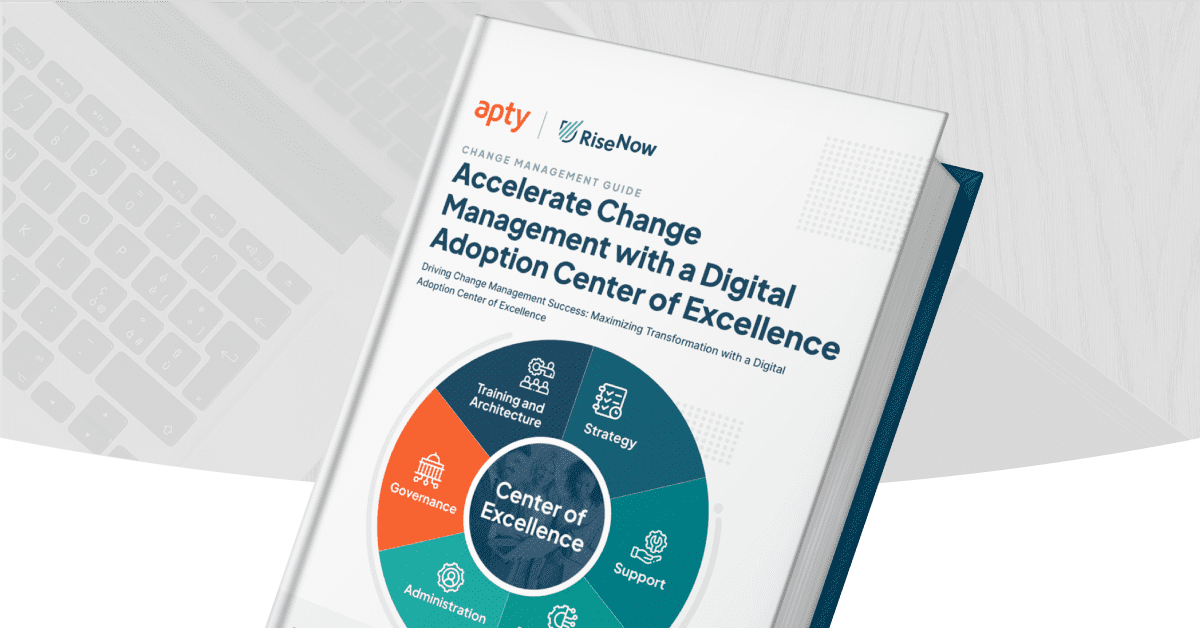
eBook DOWNLOAD: Accelerate Change Management with a Digital Adoption Center of Excellence
For example, a leading beauty product company that sold its products through a multi-level marketing channel decided to use Salesforce cloud. Their internal team of experts realized that the adoption of new processes and applications would be challenging. This meant they had to replace over 30 legacy applications in over 34 countries.
The Salesforce rollout across the organization was even more challenging because of language barriers. The size of the implementation added to the complexity, as this rollout would impact over 3 million users globally.
Training is not a viable option to ensure successful adoption as every user in a different location has different needs. Customizing training for those users would cost millions of dollars.
So, the company dissected the change process into four phases. In the first phase, they ensured that the rollout of Salesforce would only impact 10,000 users and deployed a generic training program and a Digital Adoption Platform. These helped new users easily navigate through the complex processes, so they were more focused on sales rather than the new Salesforce interface.
In the next phase, the rollout involved over 100,000 users, and the subsequent rollout involved even more users. Phase-wise, they deployed the solution to over 3 million users, and the Digital Adoption Platform ensured that this complex change was adopted seamlessly.
This change initiative helps us understand that change that starts at a micro level can be monitored effectively and handled better. The outcome generated from it inspires the whole organization, and all the stakeholders involved can come on board when the plan is well-defined and is deconstructed into different phases.
Organizations must first determine whether a change is incremental or exponential. Then, they must identify what behavioral change is needed. In our example, users were expected to use the new Salesforce cloud in accordance with their objectives and accomplish their goals.
The project team must reimagine the new processes and document the resources that they need in different phases. In this case, adoption was challenging, and they went with a Digital Adoption Platform, which solved their problem after the implementation of Salesforce.
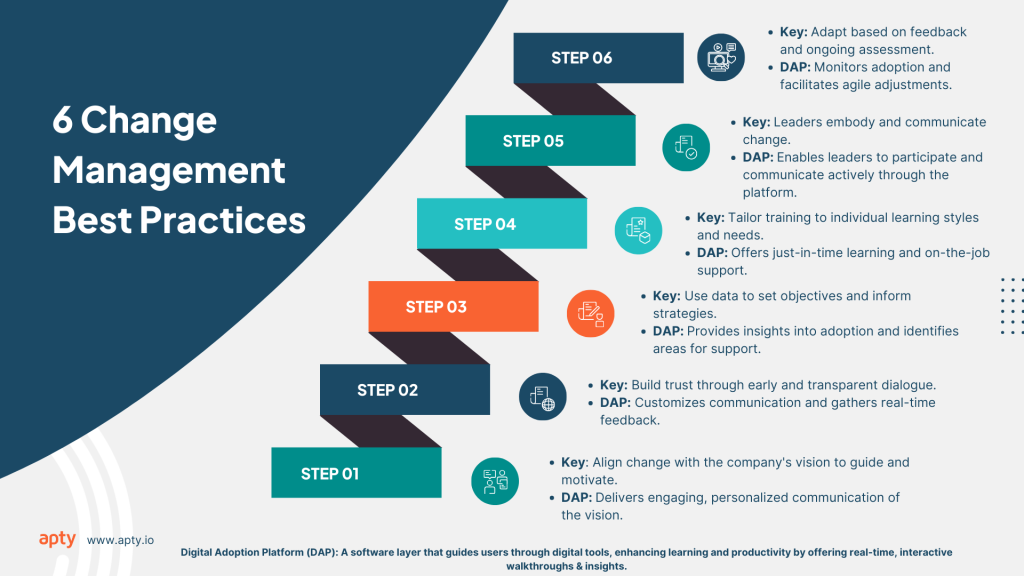
4. User-Centric Training and Support
Tailoring training and support to user needs is essential in change management. Recognizing different learning styles and readiness levels ensures effective and inclusive training programs. Training should cover the rationale and benefits of the change beyond just the procedural changes.
Providing continuous support through various platforms encourages adaptability and competence among employees. This approach ensures individuals feel valued and supported, facilitating a smoother transition and greater acceptance of the change initiative.
DAP Assist: DAPs revolutionize training and support by providing just-in-time learning and context-sensitive help directly within the applications users work with. This on-the-job training approach ensures that support is available precisely when and where users need it, greatly enhancing the learning experience. DAPs adapt to individual learning paces and preferences, making training more effective and reducing the time to competency.
5. Leadership Alignment and Support
Leadership alignment with change initiatives is critical for success. Leaders must embody the change, demonstrating commitment through their actions and communications. This visible support motivates the wider organization to embrace the change.
Leaders play a crucial role in fostering an environment conducive to change. Their active involvement and support are a powerful example, encouraging a unified approach to adopting new practices and achieving the change objectives.
DAP Assist: Leadership can use DAPs to demonstrate their commitment to the change by actively engaging with the platform and setting an example for the organization. DAPs can facilitate leadership communication, enabling leaders to address concerns, share updates, and highlight successes directly. This visibility and active participation from leadership through a digital platform reinforces the importance of the change and encourages widespread adoption.
6. Continuous Application Monitoring, Feedback, and Adjustment
Adopting a flexible approach through continuous monitoring and feedback is critical in change management. Regular assessment and readiness to adjust strategies in response to feedback ensure the initiative remains on track and relevant.
This dynamic process involves engaging with stakeholders for insights and addressing any issues promptly. Celebrating successes and making iterative adjustments based on feedback keeps the momentum alive, ensuring the change achieves its intended outcomes.
DAP Assist: DAPs are invaluable for continuous improvement, offering analytics and feedback tools that monitor adoption rates and user satisfaction. This constant monitoring allows agile responses to user feedback, enabling adjustments to training content, support resources, and communication strategies. By identifying usage patterns and potential bottlenecks, DAPs help ensure that the change initiative remains dynamic and responsive to user needs.
Application Monitoring and Change Management Use Cases
Salesforce Change Management Best Practices
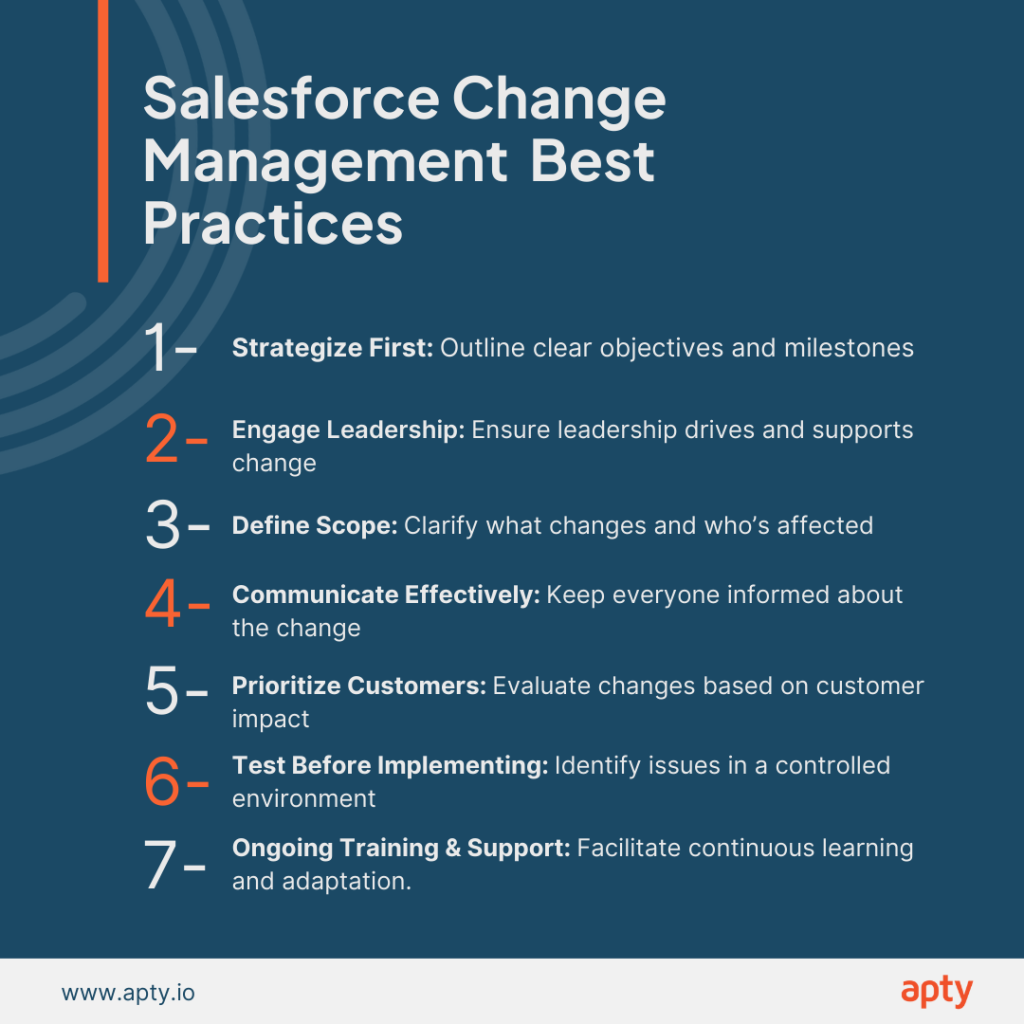
Implementing change in Salesforce requires a thoughtful blend of strategy, communication, and leadership engagement, all while keeping the customer experience at the forefront. By adhering to these best practices, organizations can confidently and precisely navigate the complexities of Salesforce implementation.
1. Strategize Before Implementing
Begin with a comprehensive strategy that outlines objectives, timelines, and milestones. A well-defined strategy ensures that your Salesforce change initiative has a clear direction and is aligned with your organization’s goals.
2. Engage Leadership in the Change Process
Leadership involvement is critical to driving change. By actively participating in the change process, leaders can provide necessary guidance, resources, and support to ensure the change is embraced across the organization.
3. Clearly Define the Scope of the Change
Understanding the full extent of the change helps in managing expectations and resources. Define what is changing in Salesforce, who will be impacted, and how, to tailor your change management activities effectively.
4. Communicate the Change Effectively
Transparent and consistent communication with employees about the changes, the rationale behind them, and the expected benefits is vital. Tailor your communication strategies to address concerns and foster an environment of openness and collaboration.
5. Prioritize the Customer Experience
Ensure that the changes to Salesforce enhance the customer experience. Every modification should be evaluated based on its potential impact on customer satisfaction and engagement, reinforcing the customer-centric philosophy of your organization.
6. Test and Execute the Change
Before full-scale implementation, thoroughly test the changes in a controlled environment. This step identifies potential issues and ensures that the transition is as smooth as possible, minimizing disruptions to both employees and customers.
7. Provide Ongoing Training and Support
Adopting new systems or processes requires continuous learning and adjustment. Offer comprehensive training and accessible support to address user questions and concerns, enhancing confidence and competence in the new Salesforce environment.
Evaluating and Adapting
The journey doesn’t end with implementation. Evaluate the effectiveness of the change management practices you’ve applied, and be prepared to adapt them as your organization evolves. The right mix of practices depends on your unique organizational context and goals.
For organizations looking to maximize the benefits of their Salesforce implementation, these best practices offer a roadmap to successful change management. They emphasize strategic planning, leadership engagement, clear communication, and a steadfast focus on customer experience, ensuring that your Salesforce changes lead to positive outcomes for all stakeholders.
Read more: Best Practices for Salesforce Implementation
SAP change management best practices
- Define workflows and responsibilities.
- Make data-driven decisions
- Communicate the change effectively to your employees
- Overcome change resistance with proper planning
- Automate mundane tasks
- Execute the change
ServiceNow change management best practices
- Resolve conflicts before implementing the change.
- Assess the risk of implementing the change
- Ensure that necessary parties are notified about the process.
- Communicate the benefits of the change to your employees
- Use the CAB (Change Advisory Board) Workbench to schedule, plan, and manage CAB meetings
- Execute the change
These best practices and change management strategies provide direction for your change initiatives. A Digital Adoption Platform can assist you in your initiatives by helping employees adopt change quickly without much resistance.
The Path Forward
Understanding and managing change is crucial for organizations aiming to stay resilient and successful. Establishing a solid vision for change ensures that all organizational members are aligned towards common objectives while promoting a culture of teamwork guarantees widespread acceptance and implementation of change initiatives. Simplifying change efforts into smaller, more manageable tasks allows for more precise focus and achievable goals, making the transition smoother and more efficient.
Adjusting and enhancing the approach to change management is an ongoing necessity for organizations. Businesses can remain adaptable to new challenges through continuous evaluation and improvement of their change strategies. This proactive stance towards change management, rooted in clarity, collaboration, and a commitment to improvement, prepares organizations to face future disruptions confidently, securing their place in a competitive market.

